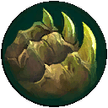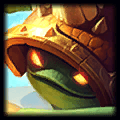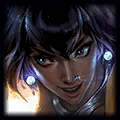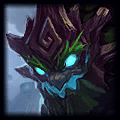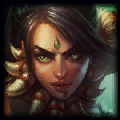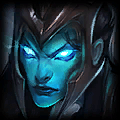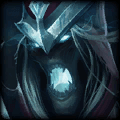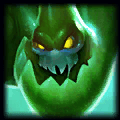

Gnar vs Senna

Comment Battre Senna en Tant que Gnar
basé sur 2 890 jeux avec Gnar contre SennaComment Nous Analysons les Counters de Champions LoL
Gnar vs Senna Résumé du Matchup
Meilleure Build pour les matchs avec Gnar vs Senna
Objets
Premiers articles


Objets suivants


Objets de base de Gnar



Articles facultatifs




Summoner Spells


Ordre de compétence



Runes
















Guide pour contrer Senna comme Gnar
Conseils pour jouer en tant que Gnar contre Senna.
Placez-vous près des murs et attirez vos ennemis pour les étourdir avec votre ultime.
Connaissez vos forces ! Mini Gnar est rapide, fragile et il inflige de gros dégâts soutenus. Méga Gnar est lent, résistant et il a un gros burst.
La gestion de votre Rage est très importante. Effectuez vos transformations aux bons moments pour profiter au maximum de vos deux formes.
Gnar vs Senna Statistiques du match


Comment Contrer Senna avec Gnar dans LoL
The stat comparisons shown on this page clarify several influential Gnar versus Senna matchup stats that may help us understand the differences between the two. As an example, Gnar’s KDA ratio ([kills + assists] / deaths) of NaN is greater than Senna’s ratio of NaN, demonstrating that Gnar may be more central to his team's team fighting effectiveness than Senna..
Gnar normally has a similar longest killing spree as his foe does. Commonly, he takes more damage than Senna. This commonly reflects different amounts of tankyness, but it can also indicate that the one champ has less agility and thus is not able to kite away from additional damage when engaged or poked.
championDifferences.title
Comparaison des types de dommages
championDifferences.playStyle.title
championDifferences.whoIsBetter
Both League champions are great champions. Both have their pros and cons. In the game's current meta, Gnar usually loses when facing off against Senna, with a 48.5% win rate. Therefore, Gnar makes a poor counter to Senna.
While Gnar does have a lower winrate than Senna, when on opposite teams, Gnar also has a greater learning curve that makes him a more time consuming character to learn and master. You should be careful when picking Gnar into Sennaas his relative depth means you may not be able to unleash his full potential without a lot of practice beforehand.
Additionally, Gnar also has some amount of utility and CC, a similar amount to Senna. This makes her just as valuable during teamfights, especially when facing champions with a ton of burst damage.
While there isn't a single best champion in League of Legends, in Gnar vs Senna matchups, Senna is the better champion with a lower win rate, more champion depth, and a similar amount of utility to help out your allied champions during teamfights.
Gnar is a somewhat poor counter to Senna. Make sure you focus your play on increasing your CS and clearing objectives. If you can do that, you should hold your own as Gnar against Senna.
Autres appariements de champions contre Gnar
Les meilleures Paires par Poste
additionalInformation.title
method.title2
additionalInformation.resources
additionalInformation.readMore
To truly master Gnar in order to counter Senna during both the laning and mid / late game phases of League of Legends, you should continue reading to gather a few extra tricks and insights into this matchup. If you pay attention to the build and stats presented here, you should increase your win rate significantly and be that much closer to League of Legends pro players.
Gnar most often racks up more CS as Senna. Champs who on average don't earn many minion kills often don't have to have much CS to be valuable teammates, such as supports. These kinds of champions are able to scale properly off of their skills, stats, and first items alone. Yet, champions with large amounts of CS, such as hyper-carries, often need many items to be effective. In either situation, try to exceed the values shown on this page to do well.
The most important items to prioritize in your Gnar versus Senna build include Gage de Sterak, Force de la trinité, and Ciel éventré. When Gnar used at least these three pieces in his build, he did much better versus Senna than with most other typical counter builds. In fact, Gnar had an average winrate of 48.5% when countering Senna with these items in his kit.
To have the best chance of beating Senna as Gnar, you should equip the Jeu de jambes, Triomphe, Légende : alacrité, Baroud d'honneur, Plaque d'os, and Surcroissance runes from the Précision and Volonté rune sets. Of all the rune sets players chose for Gnar vs Senna battles, this sequence of runes yielded the greatest win rate. Moreover, these runes averaged a 48.5% winrate overall.
If you need to get Gnar vs Senna tips and matchup stats and build suggestions for a a specific division, please choose one from the selection menu displayed above. By default, the statistics and strategies given are calculated using all rounds completed with both champs.





















